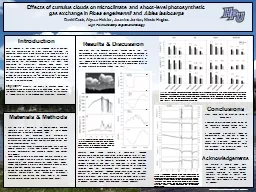PPT-Effect of cumulus cells and
Author : debby-jeon | Published Date : 2017-07-03
vitrification protocol on survival and subsequent development Golestan jahromi PhD student Introduction Several lines of evidence indicate that surrounding cumulus
Presentation Embed Code
Download Presentation
Download Presentation The PPT/PDF document "Effect of cumulus cells and" is the property of its rightful owner. Permission is granted to download and print the materials on this website for personal, non-commercial use only, and to display it on your personal computer provided you do not modify the materials and that you retain all copyright notices contained in the materials. By downloading content from our website, you accept the terms of this agreement.
Effect of cumulus cells and: Transcript
Download Rules Of Document
"Effect of cumulus cells and"The content belongs to its owner. You may download and print it for personal use, without modification, and keep all copyright notices. By downloading, you agree to these terms.
Related Documents














